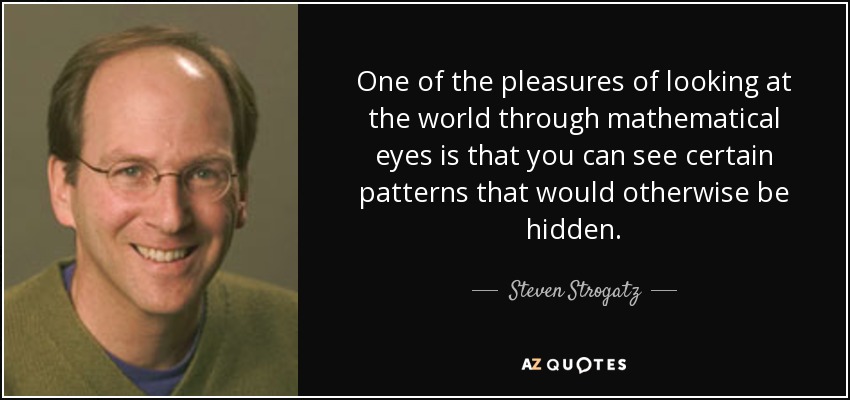If you listen to popular podcasts like Radiolab or read publications like the New York Times, chances are you’ve been exposed to the work of Steven Strogatz, author and professor of Applied Mathematics at Cornell University. His groundbreaking research in the 90’s uncovered how networks synchronize; by utilizing abstract math thinking, he formulated a concrete explanation for how swarms of fireflies could flicker in unison, and answered a question that had stumped biologists for years.
Since then, Strogatz has become an iconic voice for mathematics in the media. He wrote a weekly column for the New York Times beginning in 2010, which turned into a delightful book titled The Joy of X, A Guided Tour of Math from One to Infinity, which I am currently reading. If you happen to be a parent suddenly faced with homeschooling and your math memories are foggy at best, Strogatz has a knack for presenting math concepts spanning from beginner to advanced in an easy to grasp manner that is accessible to a much wider audience than would typically read a book about math.
This video provides a brief introduction to Steven Strogatz and the power of abstraction and the pleasure of how math reveals the beauty of hidden patterns in our everyday lives.
Strogatz has an extensive collection of videos, articles, and books on his website that are worth exploring to expand your understanding of the importance of math. I also recommend following him on Twitter, where he actively provides insightful math perspectives on a wide range of topics. He also debuted his own podcast The Joy of X several weeks ago, which features a series of illuminating interviews with math and science researchers. It has been providing me with an unexpected source of brain food as my newfound appreciation grows for a diverse range of mathematical pursuits and applications.
I went over his visual explanation of counting odds, evens, and squares by using arrangements of stones with my 2nd grader this week:
“Looking at numbers as groups of rocks may seem unusual, but actually it’s as old as math itself. The word “calculate” reflects that legacy – it comes from the Latin word calculus, meaning a pebble used for counting. To enjoy working with numbers you don’t have to be Einstein (German for “one stone”), but it might help to have rocks in your head.”
– Steven Strogatz “The Joy of X”, first published as “Rock Groups” in the New York Times Feb. 7, 2010.
From a flock of birds, to a school of fish, to a swarm of fireflies, to a crowd of humans who can’t help walking in step when crossing a particular bridge, synchronous patterns are simply beautiful displays of mathematical equations. Strogatz just might be the inspiration that changes your perception of math entirely, and replaces your dread with delight. At the very least, put his Ted Talk on for your middle or high schooler as part of their math lessons this week.


